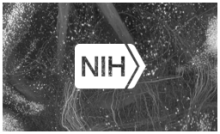
Multiscale structural mapping of mouse hippocampus … Bayesian inference and variability in a songbird model of learning … Single-fluorophore biosensors enable sensitive detection of kinase dynamics …
Integration of gene expression yields comprehensive, multiscale map of mouse hippocampus
The hippocampus – one of the most studied parts of the brain at the level of synaptic physiology and plasticity – has been linked to spatial navigation and cognitive function, as well as emotional and affective behaviors. It is one of the first parts of the brain impaired by Alzheimer’s disease, and hippocampal degeneration is also linked to epilepsy and other diseases. Therefore, thorough knowledge of its structure is critical towards a complete understanding of its function and relationship to disease. Physiological studies in both humans and rodents have suggested structural and functional heterogeneity along the longitudinal axis of the hippocampus. To understand mouse hippocampal gene expression and anatomical connectivity, Dr. Hong-Wei Dong and colleagues at the University of Southern California mapped the distribution of >250 genes expressed throughout the hippocampus and subiculum, creating the Hippocampus Gene Expression Atlas (HGEA). HGEA provides the first coherent anatomical and gene expression-based framework for mouse hippocampal network connectivity, reconciling previous, differing interpretations of gene expression and hippocampal organization. Results suggest marked similarity between HGEA subdivisions and anatomical label patterns, leading to a multiscale organization whereby HGEA subregions contribute to small hippocampal subnetworks that, in turn, constitute larger “dorsal” and “ventral” subnetworks. Importantly, the HGEA provides an anatomical and gene expression roadmap by which a structural foundation for network connectivity can guide functional dissection of the hippocampus. This can pave the way for a “dynamic” connectome tightly linked to hippocampal structure and function. For more information, please see the USC press release on this work.
Navigating the world successfully requires learning behaviors – reaching for objects, speaking, walking, and countless others. These skilled behaviors are learned through a series of trial and error. However, existing theories of learning have difficulty explaining exactly how learning depends on the error signals, for example, that smaller sensory errors are more readily corrected than larger errors and large abrupt (but not gradually introduced) errors lead to weak learning. Drs. Samuel Sober, Ilya Nemenman, and a team of colleagues at Emory University proposed and tested a new theory of sensorimotor learning that better predicts how learning depends on the error signals.
To gain a comprehensive picture of cell behavior, and particularly the dynamics of molecular interplay that give rise to function, scientists have harnessed the power of optical tools, including biosensors that enable direct visualization of multiple dynamic biochemical processes. However, these methods are limited to imaging activities in isolation, or at most, monitoring 2-4 activities in parallel. To address this issue, Dr. Richard Huganir and a team of investigators from the University of California San Diego, Peking University, and the John Hopkins University School of Medicine developed a suite of single-fluorophore biosensors for monitoring dynamic kinase activities, allowing accurate measurement and monitoring of multiple signaling activities in living cells. The researchers first developed and characterized a kinase sensor that showed moderate-to-strong fluorescence at 380-480 nm, allowing for dynamic and specific detection of protein kinase A (PKA) activity in living cells. They were then able to couple PKA signaling to growth factor signaling, improving the range of the sensor within the cell, and maximizing the ability to image multiple proteins at once. By combining biosensor probes to fluorophores of different colors and targeting sensors to non-overlapping subcellular structures, the researchers simultaneously monitored up to six different dynamic cellular processes via multiplex imaging. These included kinases such as cAMP/PKA, PKC, and ERK. Subtle shifts in kinase activity often underlie important physiological processes, including synaptic plasticity. This novel toolkit provides an important method for obtaining a better understanding of kinase activity dynamics in living cells, allowing us to understand complex cellular processes in their physiological context.
